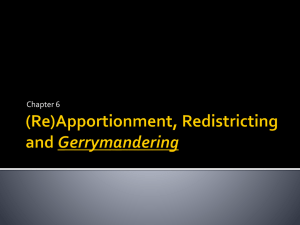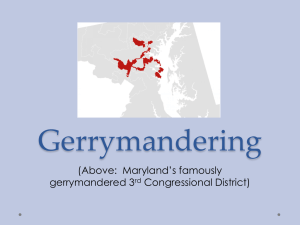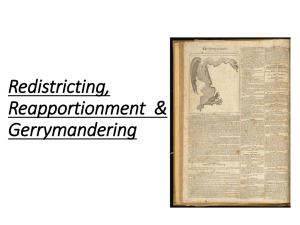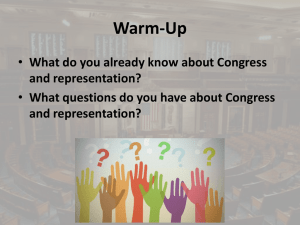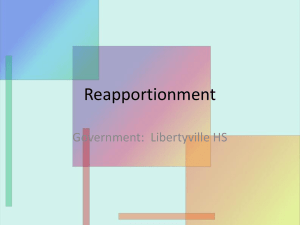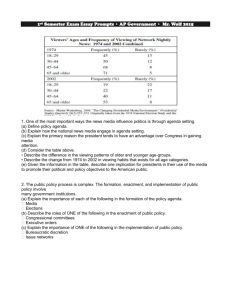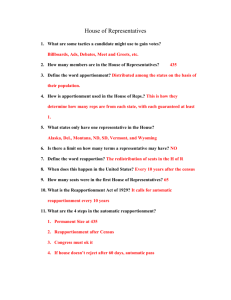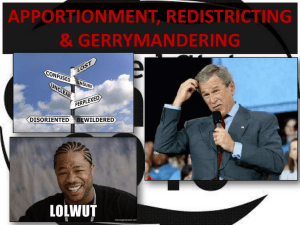Redistricting, Reapportionment and Gerrymandering
advertisement
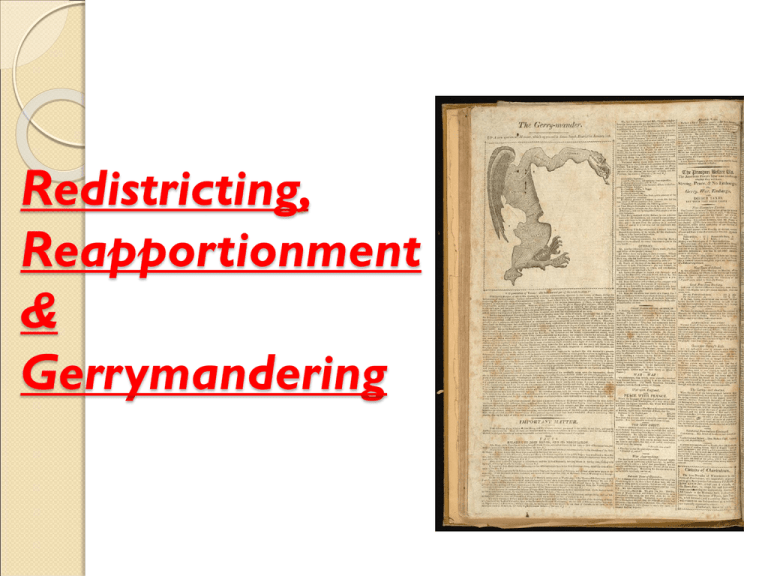
Redistricting, Reapportionment & Gerrymandering Congressional Elections Congressional elections are different than presidential elections There is no electoral college or majority needed The candidate that receives THE MOST votes (not necessarily a majority) is the winner ◦ This is called the Plurality System Redistricting Redistricting is the redrawing of congressional districts. Purposes: to reflect an increase/decrease in population or a shift in population House of Representatives Each state has 1 member and the remainder of the members is divided proportionally among the states according to population. Maryland’s New Congressional Districts: from 2010 Census But how do you know if your population has increased or decreased? The Census The constitutionally mandated process of counting all people living in the United States The census has been conducted every 10 years since 1790, as required by the United States Constitution Reapportionment A new distribution of congressional seats in the House of Representatives is based on census results The US and Constitutions require reapportionment of national, state, and local legislative bodies following each census. This process often requires Redistricting which occurs in the legislative branch by the majority party. Gerrymandering The political party controlling the state government draws a district’s boundaries to gain an advantage in elections. (this power has been historically abused) This often results in district boundaries that have very irregular shapes Packing and Cracking Packing refers to putting as many voters of a single type into one district to minimize their influence in other districts. Cracking is spreading out voters of a single type so they will always be in the minority in any given district. In 1811, the Governor of Massachusetts, Elbridge Gerry, helped to ensure the election of two Democratic senators by creating a new political district. The term and subsequent political cartoon is a combination of the salamander shape of the district along with his name. The Original “Gerrymander” Cartoon ~ Elkanah Tisdale, 1812 Gerrymandering issues have appeared several times in the Supreme Court. In 1964, the Supreme Court case, Wesberry v. Sanders outlawed gerrymandering and established the “one man, one vote” principle. The Court also agreed that the Voting Rights Act of 1965 said that purposeful gerrymandering of a congressional district to dilute minority strength is illegal. The 4th Congressional District of Illinois connects two Hispanic neighborhoods while remaining connected by narrowly tracing Interstate 294. Illinois' 4th Congressional District Separated by over 200 miles

